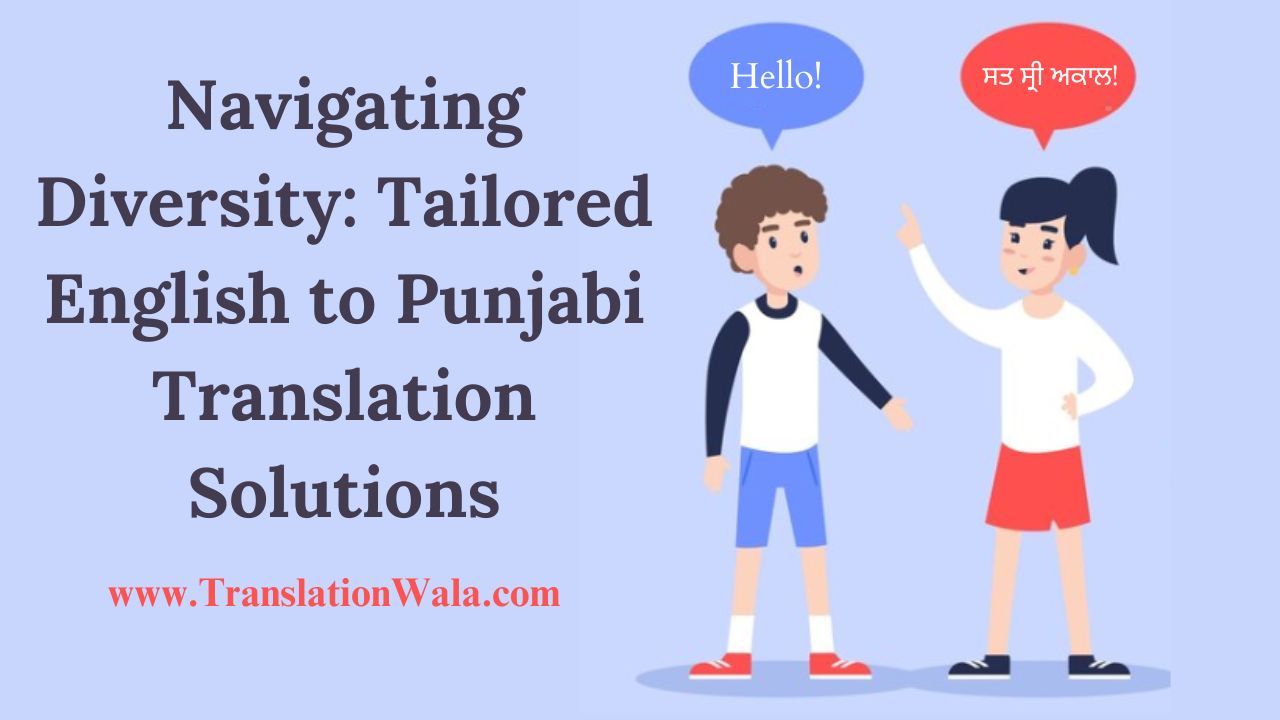In our connected world, it’s important to be able to talk to people who speak different languages easily. This is especially true in India, which has a lot of different languages spoken there. There are many regional languages spoken along with English. English is used a lot in government settings and schools. Each of these languages has its own rich culture history. One well-known language is Punjabi, which is spoken by more than 130 million people around the world. Making sure that the English to Punjabi Translation flows smoothly is not easy. This piece goes into these details and looks at specific ways to make sure that translations are correct and take into account regional differences.
Understanding the Nuances of Punjabi
The people who live in the Punjab area, which includes parts of India and Pakistan, speak Punjabi, an Indo-Aryan language. It has a long history of writing and is used a lot in music, movies, and everyday speech.
Here’s what makes Punjabi translation distinct:
- Dialects: There are many different forms of Punjabi, and each one has its own words, accent, and grammar. To make sure the translation is correct and sounds normal, translators need to be familiar with the speech used in the source material.
- Cultural Context: It’s impossible to have one without the other. A lot of Punjabi proverbs, idioms, and metaphors may not have clear English translations. A good translation can handle these subtleties while keeping the meaning and cultural background of the original.
- Script: The Gurmukhi script is used to write Punjabi, which is different from the Roman script used for English. To make sure the translation is correct, translators need to be fluent in both languages.
Challenges in English to Punjabi Translation
Several things can make it hard to English to Punjabi Translation:
- Formal vs. Informal Register: There are different ways to talk in English for official and relaxed situations. This difference can also be seen in Punjabi, though the details may be different. When translating, the translator needs to make sure that the tone and amount of politeness are correct in the target tongue.
- Technical Terminology: Tech, science, and other specific areas often use English as their main language. To make sure clarity and accuracy, turning scientific terms into Punjabi needs knowledge in both English and Punjabi.
- Loss of Nuance: When you translate words for words, you might lose the sense or use bad grammar. A skilled translator knows the details of both languages and can get the point across clearly.
Also Read: English to Hindi Translation: How to Build Relationships with Hindi-Speaking Customers
Tailored Solutions for Effective Translation
To get around these problems, English to Punjabi Translation should be done in more than one way:
- Human Expertise: There are some things that machine translation tools can’t do, especially when it comes to cultural differences and slang phrases. For translations to be correct and have an impact, they must be done by people who know a lot about both languages and the cultures involved.
- Glossary Development: Making a full list of technical words and everyday sentences used in the source material’s field can speed up the translation process and make sure that everything is consistent.
- Client Collaboration: The interpreter and the client must be able to talk to each other freely. If the translator knows who the translation is for and why it’s being done, they can use the right words.
Beyond Accuracy: Achieving Cultural Sensitivity
Translating well is more than just getting the words right. For speech to have an effect, it must be mindful to different cultures. This is how you can do it:
- Understanding the Target Audience: It is very important to use words that will appeal to the Punjabi audience. For example, they might use slang or change words to fit their cultural setting.
- Preserving Sentiment: When translating, the emotional tone of the original text should be kept exactly the same. To do this, you need to know about the culture differences that affect how people show their feelings.
- Avoiding Ethnocentrism: The translator shouldn’t add their own cultural preferences to the work. The idea is to show the data in a way that fits with Punjabi society and seems normal.
Conclusion
The differences in language and culture between English to Punjabi Translation between the two languages very difficult. Translators can help people communicate clearly, accurately, and effectively across language barriers by using their language skills, custom solutions, and cultural awareness. This not only helps people understand each other better, but it also makes the ties between groups stronger.
